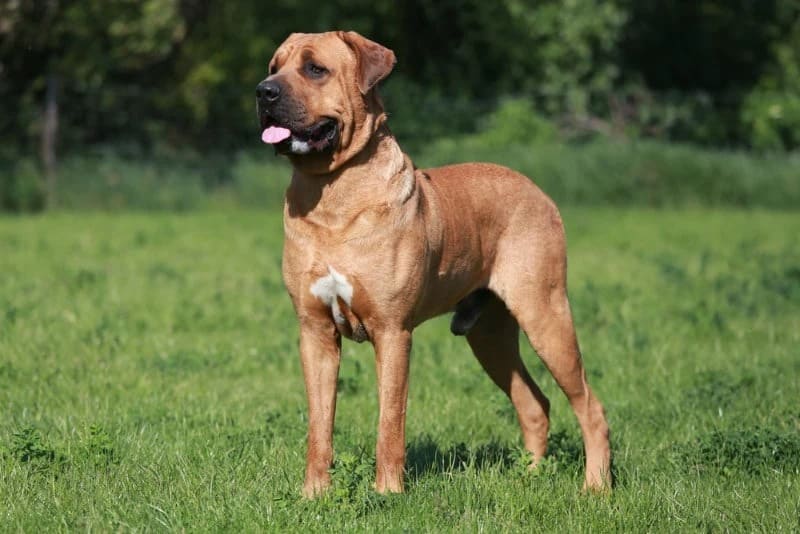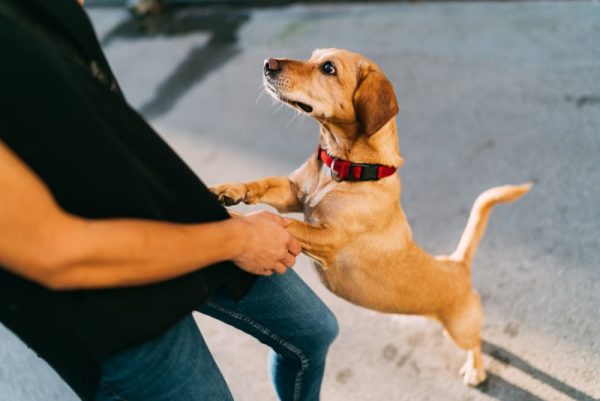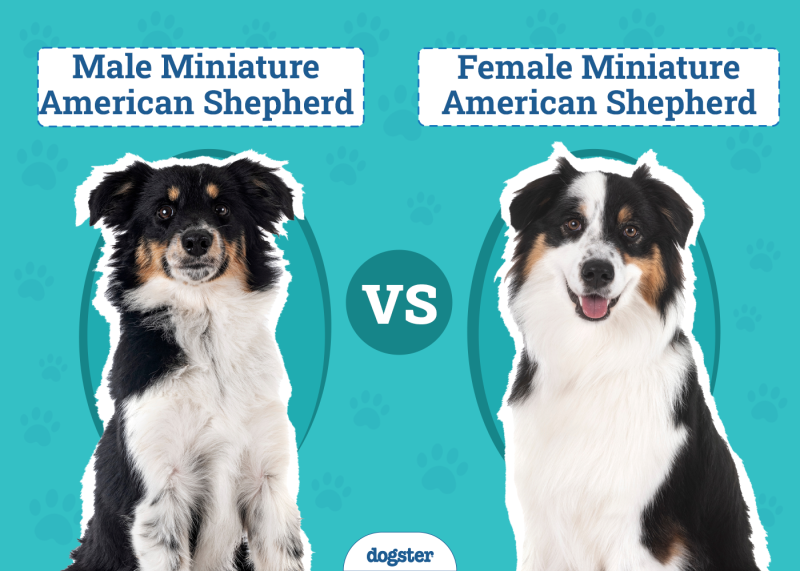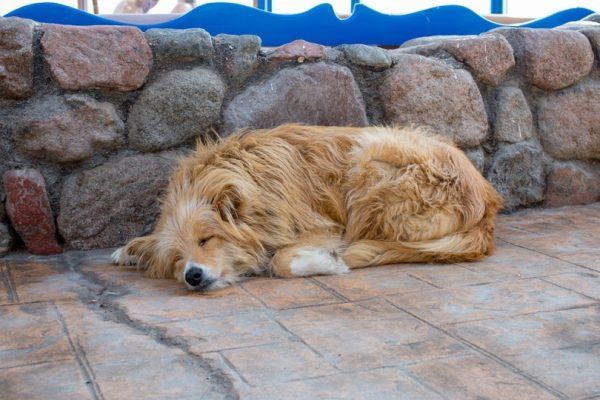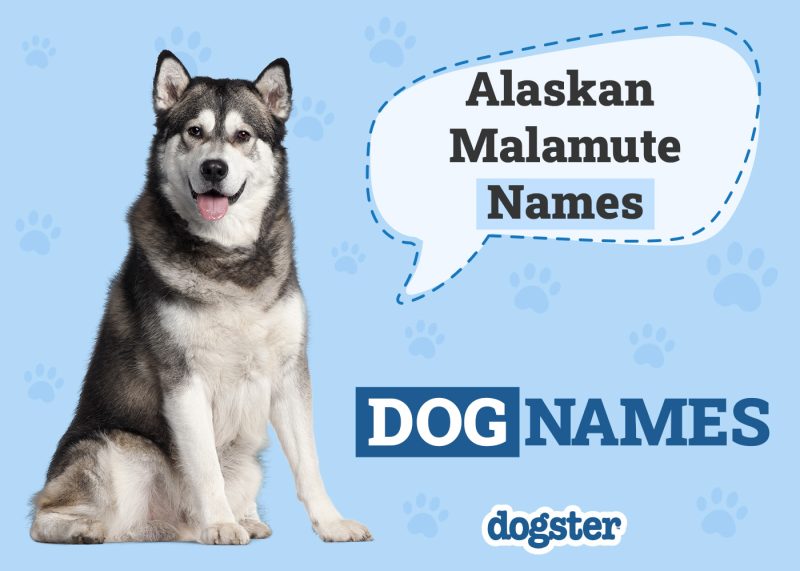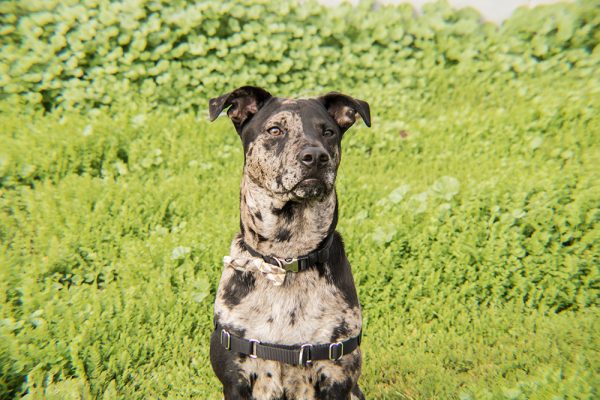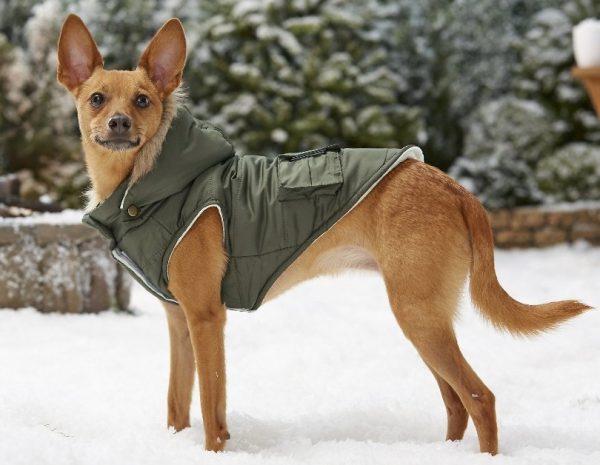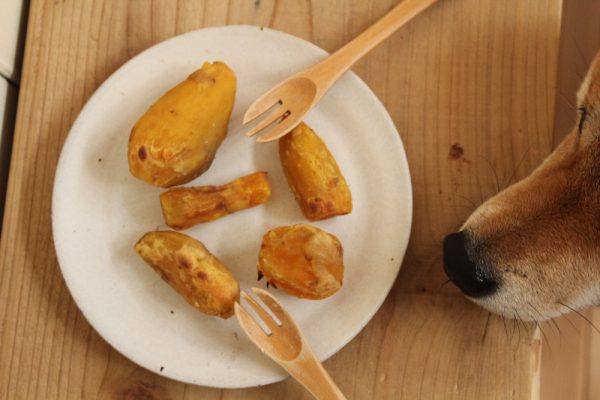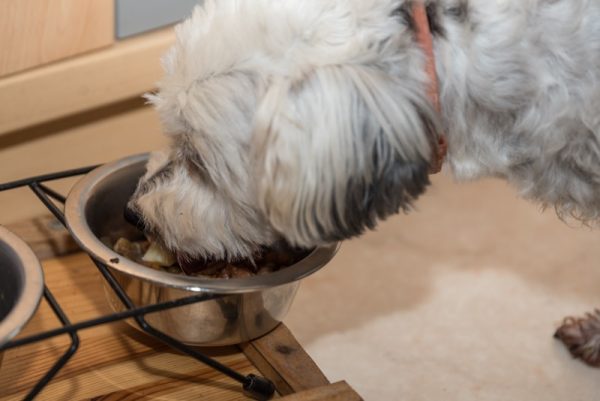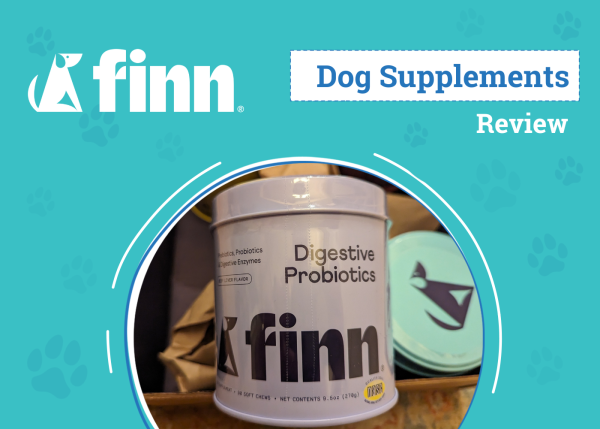In this article
View 8 More +Few dogs are as large and as imposing as the Tosa. They’re massive pups with a fearsome appearance, but the more you get to know them, the more they turn into lovable giants. They might look scary at first, but they have golden hearts and only want all the love and attention you can give them.
Breed Overview
Height:
21.5–23.5 inches
Weight:
100–200 pounds
Lifespan:
10–12 years
Colors:
Red, fawn, black, and brindle
Suitable for:
People with plenty of space and experienced dog owners
Temperament:
Loyal & loving, intelligent, stubborn, and protective
No dog will look after your best interests quite like a Tosa. They’re all about protecting you and your belongings, which can bring its own challenges from time to time. But they’re also incredibly loving and sweet, and they can make the perfect guard dog while you’re away.
They’re lower-energy dogs, which means they’re perfectly suited for those who prefer a more relaxed lifestyle. If you’re not the most active person, that’s okay as long as you have enough space for them to run around outside when they need to. However, they’re not easy to train and are more suitable for experienced dog owners.
Tosa Characteristics

Tosa Puppies
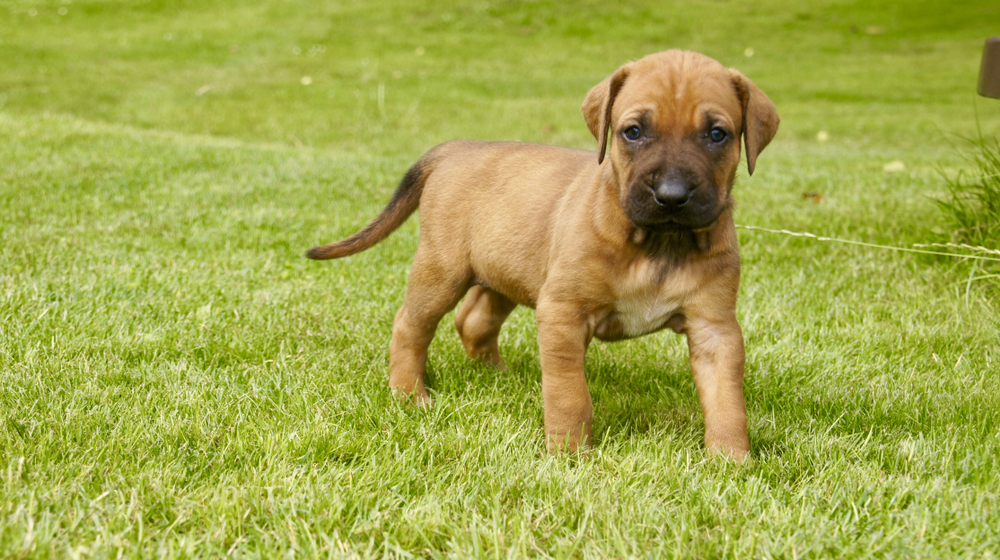
The Tosa is not a common breed in the United States, and you’ll almost certainly have to find a breeder if you want one. Not only that, but you’ll need to do your homework to find a reputable breeder. Otherwise, you could be left dealing with behavioral and health issues.
It’s also unlikely that you’ll find a Tosa in a shelter, but because of their dominant personality, it’s not entirely unheard of. Unfortunately, because of their much larger size, trying to train a full-grown Tosa with preexisting behavioral problems can be challenging.
Overall, be ready to travel a bit to track down a breeder, and you’ll likely need to wait a little while until they’re ready to have another litter. If you get on a waiting list for a puppy, you may have to wait several months before you can bring one home.
Tosa Origin & History
The Tosa originated in Japan, where they were fighting dogs. They’re a newer breed with a history dating back to the late 19th century when breeders started mixing classic Shikoku fighting dogs with foreign dog breeds.
Fortunately, Tosas no longer fight their entire lives, but with their massive size and fearsome appearance, it’s easy to see why they were so successful in the dog fighting ring.

Temperament & Intelligence of the Tosa
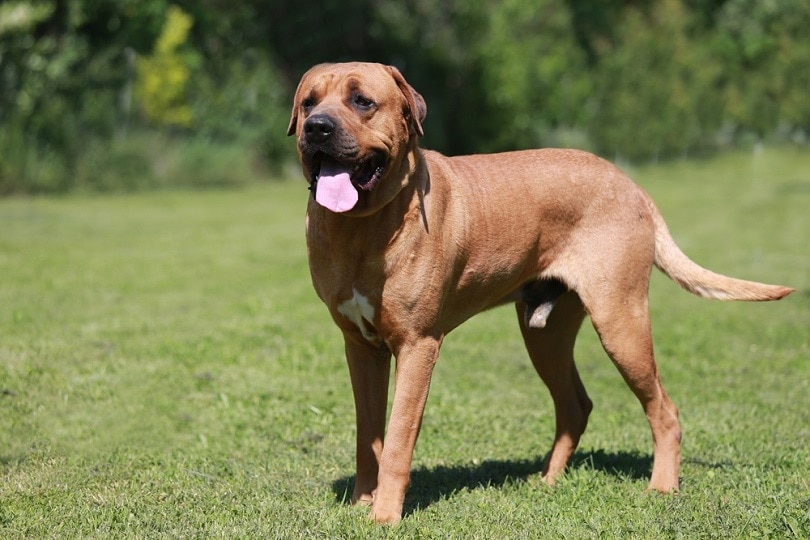
With their classic dog fighting origins, it’s not surprising that sometimes the Tosa can have a prickly temperament that can be challenging to deal with. Proper socialization and training can help, but it’s up to you to meet these expectations early on.
They’re incredibly smart dogs but have a stubborn streak you’ll need to work your way through. This stubborn streak, combined with their massive size and feisty temperament, can make them extremely challenging for first-time dog owners.
Are These Dogs Good for Families? 🏡
The Tosa can make a great family dog, but you must be careful when introducing them to visitors. They’re protective of their family and wary of strangers, and it’s best to begin training early.
Socializing them with children early on can make a big difference, but you’ll need to be careful of their larger size. Often, they just want to play, but they can easily knock over a toddler who’s a little unsure of their footing. Therefore, the Tosa is suitable for families with older children.
Does This Breed Get Along With Other Pets? 🐶 😽
Although the Tosa can make a great pet, they’re not the best choice if you have pets. With proper socialization and plenty of prior experience with dogs, it’s possible to raise them in a multi-pet home, but you have to proceed with extreme caution and introduce your Tosa to other pets gradually.
Early socialization is critical for a successful relationship with other pets, but it’s more difficult if your Tosa is an adult. A puppy can learn to tolerate and befriend other dogs, but if you introduce new pets to an adult Tosa, the socialization and training process will take much longer.

Things to Know When Owning a Tosa
A Tosa is not an excellent pup for first-time dog owners since they’re challenging to handle and train. Below, we’ll discuss their care requirements because we want you to know exactly what you’re getting yourself into before you bring one of these lovable giants into your home.
Food & Diet Requirements 🦴
Because of their massive size, it might feel like you need to take out a second mortgage to give them all the food they need. Even the smallest Tosas need 5 cups of kibble daily, while larger Tosas can easily gobble up 7.5 cups daily.
Wet and fresh food is even more expensive when you have an enormous canine, but kibble is fine as long as it’s high-quality and nutritionally complete. Carefully measuring their daily portions is vital since overfeeding them can put more pressure on their joints and bones and lead to other health conditions, like obesity.
You can speak to your veterinarian about your Tosa’s nutritional requirements and develop a diet plan that keeps them healthy and happy.
Exercise 🐕
Like most massive dogs, a Tosa doesn’t take much to wear out. We recommend taking them out for at least two 20-minute walks daily and engaging in a few outdoor play sessions. When they’re younger, it’s crucial to avoid high-intensity exercises. Until they reach adulthood, casual walks and playing simple games like fetch are ideal.
Although they’re not very energetic, they need space to run around, and they’ll be happier in a home with a fenced-in yard. They’re not suitable pets if you live in an apartment or don’t have access to a large yard.
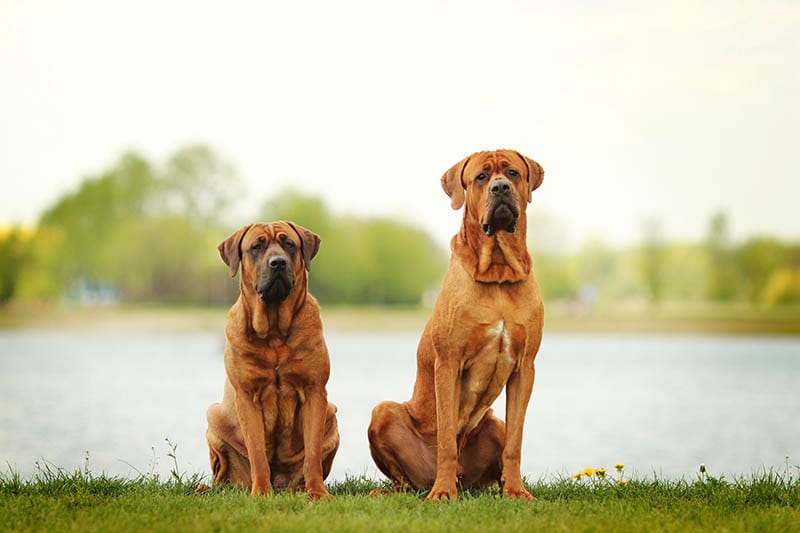
Training 🎾
Although a Tosa can be stubborn at times, that doesn’t mean they’re untrainable. Consistency is critical, and it’s best to start with one training session a day that lasts between 10 and 15 minutes.
Keeping the sessions short will help them focus on your lessons and prevent them from becoming bored or unresponsive to your commands. Positive reinforcement is the ideal training method since harsh corrections can make them fearful and prevent them from establishing a strong bond with you.
Grooming ✂️
Overall, grooming is about as easy as it gets with a Tosa. An occasional brushing can help with shedding, but once a week is more than enough. The occasional bath is beneficial, but you don’t want to overdo it since frequently bathing can strip the essential oils in their coat.
Brushing their teeth daily is ideal to maintain their dental health, but you should brush them at least three times a week. Clipping their nails every 4 to 6 weeks is also important since they’re not high-energy pups that naturally wear their nails down.
Health and Conditions ❤️
For the most part a Tosa is a healthy breed, especially if you get them from a reputable breeder, provide a high-quality diet, and take them to frequent vet visits. However, like many larger dogs, they’re vulnerable to gastric torsion.
A slow feeder will prevent them from gobbling up their meals too quickly and may reduce the chances that they’ll experience gastric torsion.
- Hip dysplasia
- Obesity
- Dental problems
- Gastric torsion
Male vs Female
For the most part, male and female Tosas are similar. However, males are significantly taller and can weigh up to 100 pounds more than females.
Females are still massive, and even the smallest females weigh about 100 pounds. Another difference that’s often tied to their size is their lifespan; females tend to live a little longer because of their smaller size.

3 Little-Known Facts About the Tosa
The Tosa is a rare and often misunderstood dog, and because of that, there’s no shortage of facts to pick from. We’ve highlighted three of the most interesting facts about the Tosa for you below.
1. They’re Usually Gentle and Kind
If you meet a Tosa, you’ll be surprised to learn that, with proper training, they are some of the gentlest and kindest dogs in the world. It’s up to their owners to keep them that way, and lifetime training is essential to keep them well-behaved.
2. They’re Banned in the UK
We don’t believe there’s a bad dog, but because of a handful of incidents in the United Kingdom, they’re one of a few breeds that can’t live in the country.
3. They’re a National Treasure in Japan
The UK banned them, but Japan reveres them. They’re a highly sought-after dog in Japan, even if they aren’t the easiest pet to properly own and care for.
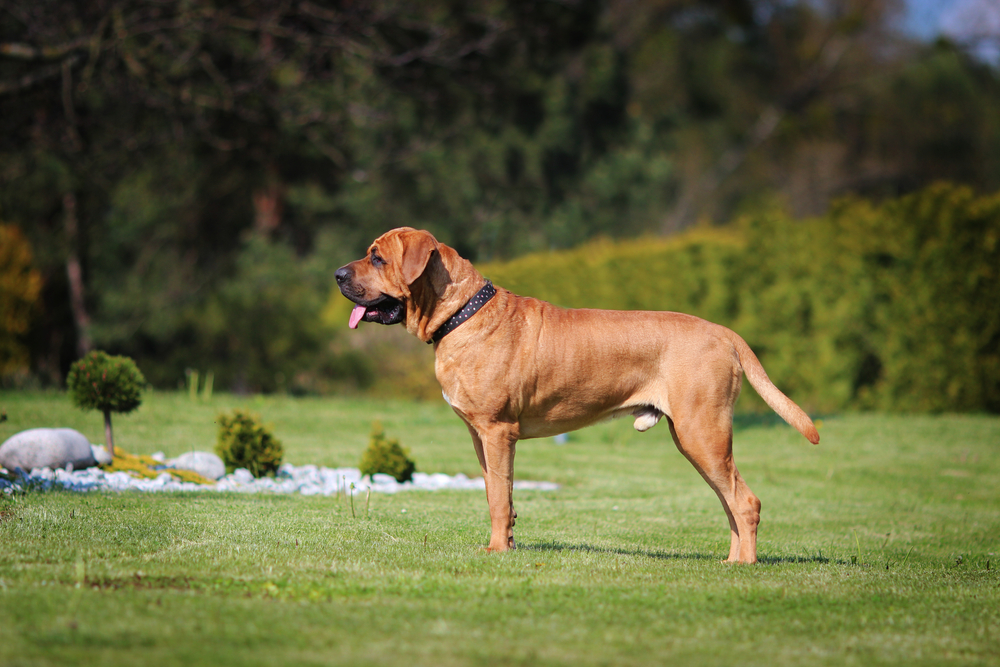

Final Thoughts
Although the Tosa isn’t the perfect dog for everyone, that doesn’t mean they won’t be the ideal pet for you. They make great companion dogs if you know what you’re getting yourself into and have the time to train them.
They’re more suitable for experienced dog owners who can provide consistent training and handle a large, stubborn pup. All they want to do is love and protect you, and what more could you ask for from a loyal hound?
See also:
- Why Does My Dog Cough After Drinking Water? 6 Vet-Reviewed Reasons
- Dogs in Heat: 10 Vet-Verified Facts
Featured Image Credit: acceptphoto, Shutterstock
